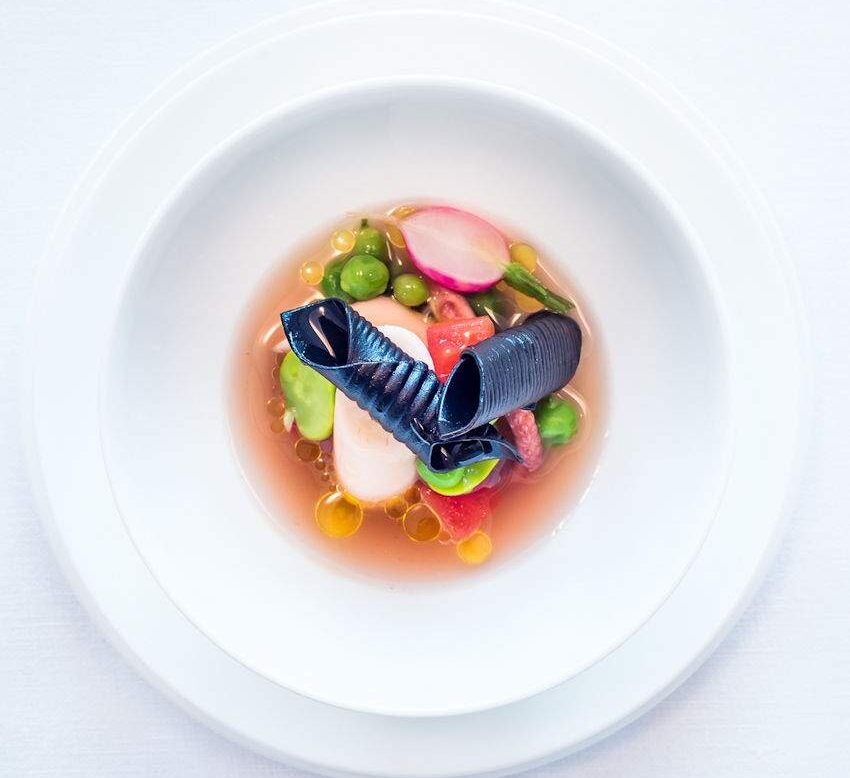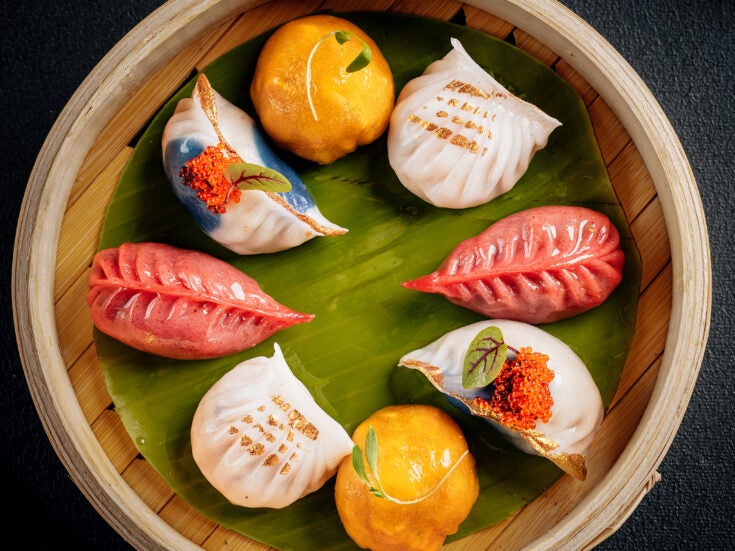
The food is the star attraction of the Angler, and more than makes up for the décor, writes Christopher Jackson
Angler presides over the South Place Hotel’s upper floor – hoisted above the financial district in Moorgate, as if it wants to forget commerce for a moment. It’s a hotel aspiring to bring leisure to a part of London designed for work. You would stay here only if you had a lot of money but knew nothing about London: one instantly suspects a privileged but low-information clientele.
The restaurant’s space itself is long and thin, like an airport lounge: lowered blinds acknowledge that the view isn’t among the place’s highlights. In fact, the décor is generally unmarvellous: B & M-ish bookcases host kitsch floral arrangements; an aluminium ceiling tells you that the world is stretching towards a dreary infinity. All this contributes to a sense that the building is hemmed in both by its position and by a minor – but nonetheless nagging – sense of C minus.
Happily, these architectural fears would not be carried over into the food. It might be a surprising place to discover some of the town’s most august fish-cooking. But there was a lot of very fine cooking to be had.
Take, for instance, the roast octopus with which we began. Octopus is difficult to find and hard to transport, and therefore very difficult to price (£18 is a trifle high). It’s also challenging to cook if you can get it on the premises. This specimen – no doubt swimming in the English Channel not so long ago, rhodopsins alert for the next thing – was a memorable succulence.
But here again there was a minor frustration. The accompanying Jersey royals were excellent, but it also came with a sort of obsolete onion ring, but without onion in it: fatty, purposeless, it made one brood a little on one’s pencilled-in heart attack in 2035. The octopus therefore resembled a good tune without decent orchestration – a gastronomic ‘She’s Leaving Home’. But you cannot keep a good man down: the courgette blossom hand-picked crab with lemon verbena and white tea was a fine dish, with a quasi-Japanese scrupulousness.
I wouldn’t want to give the impression that we had no wine: the late Oliver Reed would have approached us with an interested swagger of competitiveness from the other side of the room. One was an unusual 2016 Assyrtiko grown in volcanic Santorini: this was an Olympian cup of cooled fire. A spirited 2014 Chardonnay from the hot Kumen River region in New Zealand followed, flowing with Burgundy-esque acidity around the octopus.
It’s rare to find so many different kinds of fish all cooked with such élan. Next came the agnolotti of native lobster: the pasta exhibited the right texture, and the lobster, as if sensing some renewed opportunity for life, burst through. Meanwhile the roast Newlyn cod, with spring peas, Cornish squid and girolles had a nice geographical specificity – as if the coastal waters of Cornwall could be tasted along with its inland, all in one go.
The evening was beginning to move in the direction of gin. But first came the lushness of English strawberries served with Schezuan pepper cream and lovage meringue: these reminded us that Wimbledon fortnight was not far away. The chocolate with praline, reduced milk, and hazelnut was the richness which made the gin necessary.
And so out onto the balcony, with a view of several accountancy firms, where computers were on standby awaiting the next day’s assault on the business world. What a curious place Angler is – so much culinary expertise, but somehow incoherent as a space: it can be like discovering a Monet lying in a street in Woking. By the bar was a picture of Diana Rigg during her Avengers heyday: all kickass girl power, and sixties technicolour, I couldn’t quite say why she was there. I decided she must serve as an emblem of the place’s needed makeover.
So interior designers everywhere must flock to Angler, and never leave until they have won a commission to alter it. But while they’re there, they should try the food – they won’t be disappointed.
Christopher Jackson is the head of the Spear’s Research Unit
Related
Review: Smiths of Smithfield, Top Floor






